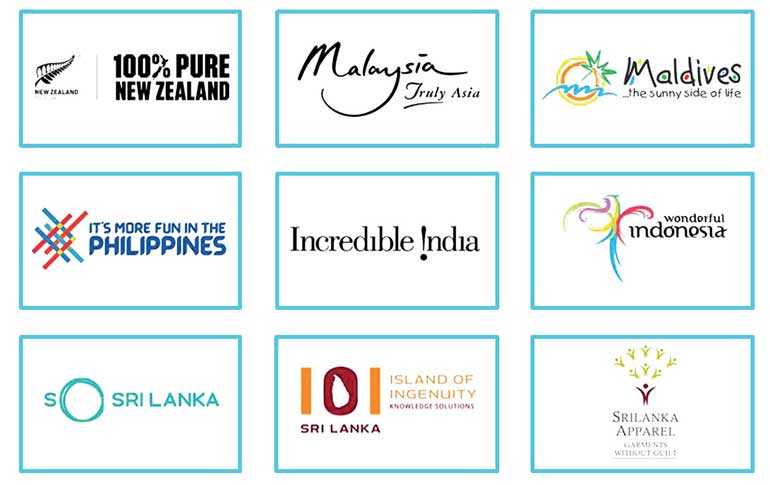Saturday Jan 17, 2026
Saturday Jan 17, 2026
Wednesday, 30 December 2020 00:00 - - {{hitsCtrl.values.hits}}

Brand Finance Lanka Managing Director Ruchi Gunewardene uses national tourism destination brands to illustrate the process of brand positioning, applicable for global or local marketing of product, service, corporate or nations
What do these destination brands have in common?
The success of these are in the ability to evoke a distinct perception of the brand in our minds and as such, they have not been changed for decades. Incredible !ndia has been in use since its launch in 2002 and 100% Pure since 1999.
This article explores brand positioning through destination brands because they evoke distinct responses. This is what product, service, B2B and nations aspire, to develop powerfully evocative brands.
The principles of a strategic approach
We do not know where the inspiration was to develop these destination brands. It could well have arisen from the mind of a creative individual (right brain) or have been diligently crafted from an in-depth study by a brand strategist (left brain).
Whatever the approach, it required considerable skill and insight to distil the very essence of each country’s offering with a distinctive positioning expressed through a vivid brand promise.
The Brand Finance methodology is to adopt a carefully engineered process involving a study of the category, including market research to discover trends and uncover consumer insights. Examples of adopting such a process can be seen in the successful local outcomes in the Garments Without Guild brand for the apparel industry and the recent Island of Ingenuity for Sri Lanka’s knowledge solutions.
Success can be secured by following a logical approach: fact finding, research, consumer insights, hypothesis development, concept evaluation and refining a brand definition and positioning.
Brand positioning enables a base or a platform to be built on which marketing can be carried out. This ‘packaging’ of the product enhances its value before customer engagement begins.
Defining success
It is this clarity which builds synergy and creates value. It aligns product development, establishes service standards, motivates employees and develops relevant business processes. Whether it be market research (which can be done less often), new campaigns (which can run for much longer with less frequency of change), lower cost of communications in media (as the overall message is consistent and require less investment); they all add up to cost savings and quicker results.
What is a strong brand?
By establishing clarity on what it stands for, the brand sets the expectation for its customers. This is the beginning of building a lasting bond. Strong brands do this by evoking a distinct response.
More focused the definition, greater the clarity and customer interest. Expressing this through appropriate words, imagery and associations reinforces what it stands for, creating that memorability.
Such brands evoke feelings and empathy with its stakeholders precisely because it is an axiom: which is a statement that is established and accepted and self-evidently true.
Evaluating brand positioning
There are three main elements that are integrated into a successful positioning. Here is what those winning brands have:
Differentiation: This can be measured through the degree of distinctiveness relative to the competitive set. Further the divergence from the norm, the more likely it will stand out. A key element of being different is to be able to evoke distinctive imagery or associations. Malaysia has taken the high ground through its brand positioning by encapsulating all the wonders and diversities of Asia into their country. This is clever as it simplifies the travellers’ choice by evoking all the exotic associations of Asia into
Malaysia
Relevance to stakeholders: This is a measure of the significance of the brand’s features with its stakeholders. When a brand takes a distinctive position it naturally elicits beliefs. The more empathetic they are the better. Maldives is a country which have only a very few things to offer the traveller. It has sun, sand and sea. To those who are only seeking a quiet and leisurely beach holiday the brand offers the perfect option through its highly relevant sunny side of life
Credibility of offering: New Zealand’s brand promise of 100% Pure is routed on a strong belief system that embraces sustainable practices and environmental protection. Its low population density results in secluded travel destinations which are in pristine condition and perfectly captures the brand offer, making it highly credible. India by contrast embraces the diversity the country offers through one simple word- Incredible. It celebrates the chaos of the highly congested unplanned cities as well as the pristine beauty of the isolated Himalayas, the historic splendour of the multitude of kingdoms, faiths, mysticism, sights, sounds and tastes the country has to offer
Measurement and fine-tune
“It’s more fun in the Philippines” destination brand is an interesting one in being a recent introduction. It’s a country where music is a passion and is present in every occasion and emotion, adding to the vibrant night life of the cities. The brand would seem to have the elements of longevity, as it scores well across all the measures set out above.
A successful brand needs active management and development. Tracking performance on how it delivers differentiation, credibility and relevance through a structured metrics enables fine tuning of marketing initiatives.
Instead of hoping that an advertising campaign will strike gold and propel the brand to success, the alternative route is to first invest in creating a brand. It is a diligent process that requires flashes of inspiration, creative expression, but more importantly a lot of hardnosed digging to find that insight leading to a long term and sustainable strategic brand position.